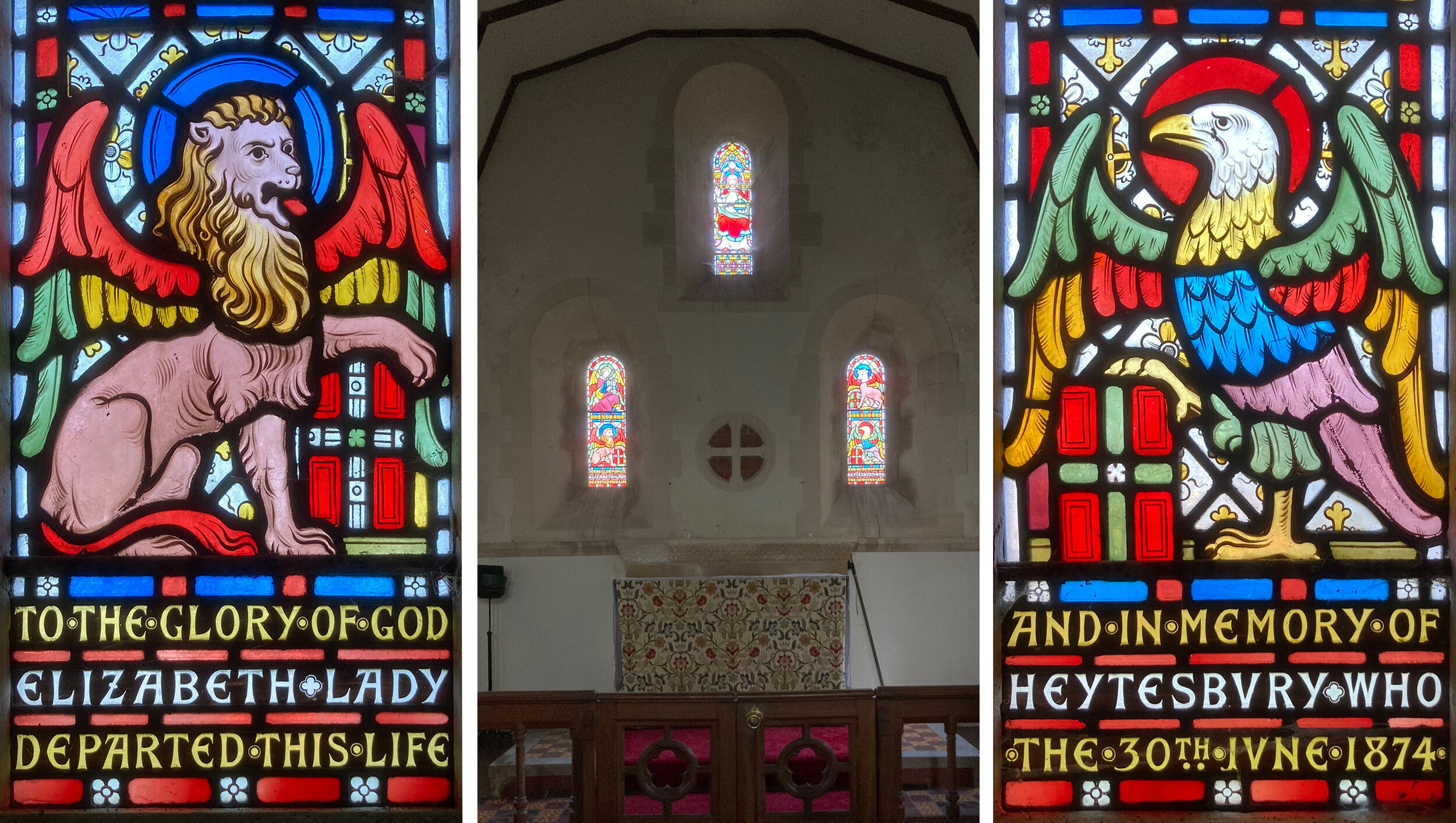Left, late fifteenth century St George in St George’s Church, Kelmscott. Right, St George by Veronica Whall 1928 in Christ Church Eastbourne,
Over the years I’ve been collecting St George windows, a saint easy to identify from the red cross that is his emblem, his suit of armour and the dragon that always appears at his feet. In the more dynamic versions he is spearing the dragon from his horse, the similarities of the pose in versions made almost 500 years apart, shown above, are striking.
Left, St George by Jones & Willis 1905 in St George, Orcheston. Centre, St George by Morris and Co. 1860s in St Nicholas Beaudesert, Henley in Arden. Right, St George by Theodora Salusbury c. 1920 in All Saints, Newton Linford.
More often he is standing more or less on the dragon, holding a shield and a spear. What really interests me are the dragons which are always at the bottom of the windows and therefore easy to examine and photograph. In every example I have from the 1860s to the 1930s (above and below) the dragon is made of luscious streaky glass in a range of rich colours, purples, pinks, greens and blues. They are lovely but confusing pictorially as the deep colours jump forward, even when the dragon is in the background.
Left, dragon by C.E. Kempe in St David 1898, Moreton in Marsh. Right, dragon by Morris of Westminster 1930 in St Barnabas, Swindon.
Left, dragon by Aldam, Heaton & Co. in St Michael and All Angels, Brinkworth. Right, dragon in St Oswald, Lythe.
Some of the loveliest dragons are at the feet of the Archangel Michael instead. In the two examples above their long jaws and scales show up better on paler streaky glass, and in the two examples below (left and middle) you know it’s St Michael not from the inscription but from his wings. In one of my favourite sets of local windows there is a beautiful dragon made of red flashed glass at the feet of St Margaret (below right).
Left, St Michael in St John the Baptist, Kingston Lisle by Heaton, Butler and Bayne 1911. Centre, St Michael by Powell & Sons 1919 in St Michael, Highworth. Right, St Margaret by Heaton, Butler and Bayne in St Nicholas, Grafton 1888.
There is a really effective window of St Michael in one of the large, beautiful arched windows of Romsey Abbey (below). The lighting in the alcove made it difficult to get a good photograph of the glass, which is delicately coloured and dynamic with a swirl of feathers and banners as the blue and green streaky dragon gets speared.
St Michael by C.E. Kempe 1897 in Romsey Abbey.










